Product Description, Size & UPC
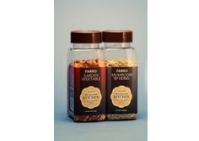 Farro
An ancient grain from the region of Toscany, Italy has a pleasant nuttiness and hardy texture.High in Fiber, Protein , B- vitamins and very low in gluten.
Farro
An ancient grain from the region of Toscany, Italy has a pleasant nuttiness and hardy texture.High in Fiber, Protein , B- vitamins and very low in gluten.
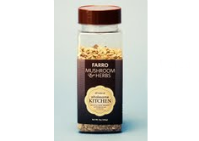 Farro & Mushroom
UPC# 857943002314
Farro & Mushroom
UPC# 857943002314Farro, Mushroom, Bell Pepper, Onion, Basil, Celery, Oregano & Chive
9oz
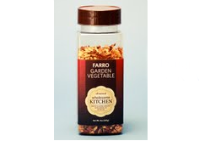 Farro & Garden Vegetable
UPC# 857943002321
Farro & Garden Vegetable
UPC# 857943002321Farro, Carrot, Onion, Tomato , Bell Pepper, smoked Paprika, Parsley, Cilantro, and Fennel Seeds
9oz
 Bulgur Wheat
Currants & Bulgur wheat Taboule
Bulgur Wheat
Currants & Bulgur wheat TabouleUPC# 857943002307
Bulgur wheat, Currant, Zaa’tar, Tomato, Mint, Parsley & Cilantro
11oz
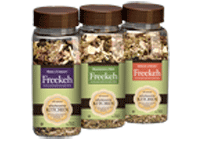 Freekeh
Freekeh
UPC#
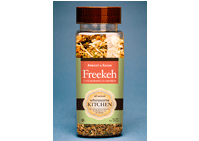 Apricot & Rasin
Apricot & Rasin
UPC#
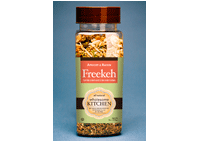 Herb & Currant
Herb & Currant
UPC#
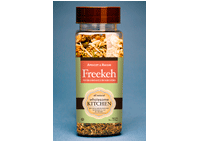 Mushroom & Herb
Mushroom & Herb
UPC#
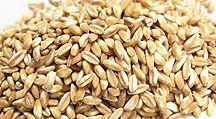 Despite this, farro is still grown, both wild and cultivated. It is a popular food in Italy, parts of Europe, Asia and parts of the Middle East. When farro is harvested, it is divided into three grades, long, medium and cracked. The grain looks like a plump barley grain.
Farro is a whole grain that is an excellent source for complex carbohydrates. Additionally, farro has twice the fiber and protein than modern wheat. Different than some other whole grains, a carbohydrate in farro called cyanogenic glucosides has been found to stimulate the immune system, lower cholesterol and help maintain blood sugar levels. While farro does contain gluten, the gluten molecules are weaker than modern wheat, making it more easily digested.
In addition to minerals and vitamins, farro is rich in antioxidants, phytonutrients, lignans and betaine. Betaine, when combined with choline, has been shown to prevent or reduce stress-included inflammation, which can be beneficial for individuals suffering from certain medical conditions.
Despite this, farro is still grown, both wild and cultivated. It is a popular food in Italy, parts of Europe, Asia and parts of the Middle East. When farro is harvested, it is divided into three grades, long, medium and cracked. The grain looks like a plump barley grain.
Farro is a whole grain that is an excellent source for complex carbohydrates. Additionally, farro has twice the fiber and protein than modern wheat. Different than some other whole grains, a carbohydrate in farro called cyanogenic glucosides has been found to stimulate the immune system, lower cholesterol and help maintain blood sugar levels. While farro does contain gluten, the gluten molecules are weaker than modern wheat, making it more easily digested.
In addition to minerals and vitamins, farro is rich in antioxidants, phytonutrients, lignans and betaine. Betaine, when combined with choline, has been shown to prevent or reduce stress-included inflammation, which can be beneficial for individuals suffering from certain medical conditions.